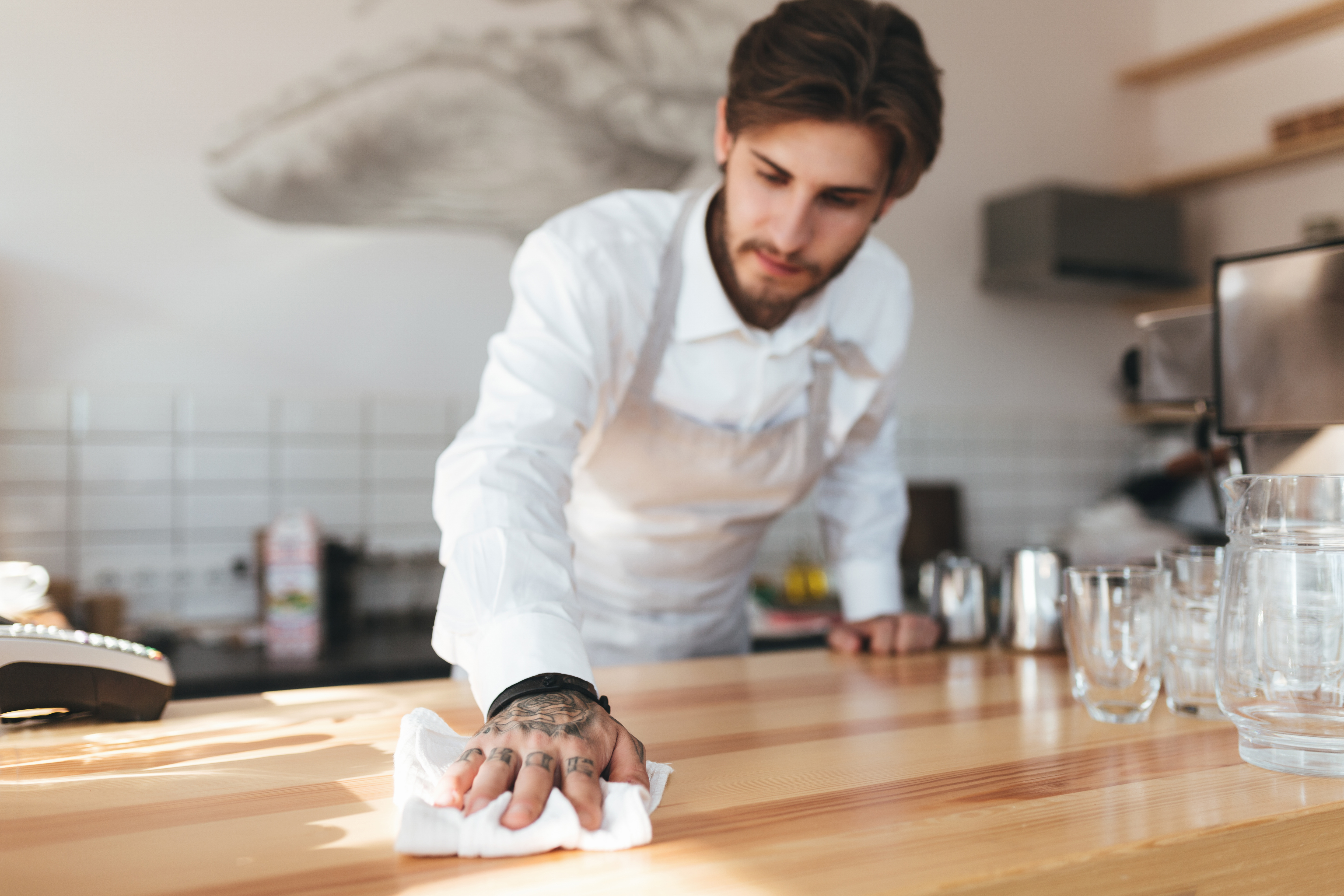Without proper training, it’s easy to think a one-step cleaning wipe, like a Lysol wipe, would be the best choice to clean an area you’re preparing food in. Sure, they are guaranteed to disinfect and sanitize. However, you could be blindly poisoning the food you’re preparing.
Lysol wipes are an effective way to blast pathogens. But the results are often overkill. Disinfectant wipes, if made of strong chemicals, require surfaces to be rinsed after use. Putting your foods on a surface after a Lysol wipe touches it can cause respiratory problems, irritation in the eyes, nose, and mouth, or extreme skin irritation.
A food prep area may look clean, but be crawling with danger. There are standard protocols for cleaning professional food prep areas that eliminate germs without being too chemically concentrated. If you don’t follow protocol, you’ll fail your health inspection. Expect every health inspector to test your cleaning chemicals to make sure they are at the right concentration.
To understand how to safely prepare food without pathogens, understand the different ways to remove germs:
1. Cleaning
Cleaning a surface refers to removing any visible debris. For a food prep counter, this would include removing scraps, napkins, or tools so that just the surface remains. To take it a step further, you could use soap and water in this step.
2. Disinfecting
Disinfecting works by using chemicals to kill germs on surfaces or objects. According to the CDC, this process further lowers the risk of spreading infection by killing germs on a surface. When using disinfectants in the kitchen, be sure the chemicals are labeled as safe for food prep use. Wear gloves appropriate for the disinfectant being used.
3. Sanitizing
Sanitizing lowers the number of germs on surfaces or objects to a safe level, as judged by public health standards or requirements. This process works by either cleaning or disinfecting surfaces or objects to lower the risk of spreading infection.

Knowing the different methods of removing pathogens is crucial to know how to clean safely. For professional food prep counters, follow standard safety practices below:
1. Clean:
Remove debris.
2. Rinse:
Rinse the area with hot water.
3. Sanitize:
Follow all product directions. Ideally, you can use no-rinse sanitizing products to maximize time while safely sanitizing. If you use EPA-approved chemicals to sanitize, you must rinse the area with water again after the chemical’s contact time has been achieved. Keep in mind that, according to FDA guidelines, you must allow an area to drain or air dry after sanitizing before it comes into contact with food.
4. Disinfect:
Disinfecting a food prep surface should only be done if chemical spills or bodily fluids have invaded your workspace. Many disinfecting products, including ones with chlorine bleach, are not safe to use in food preparation areas without an added step of a rinse after disinfecting. Read all labels carefully, as residues could cause allergic reactions or accidental ingestion.
Extremely harsh chemical wipes should not be the first thing you reach for to clean minor spills.
By keeping these harsh, quat-filled chemicals for use when needed, you could be saving
yourself or the people you are feeding a trip to the doctor.